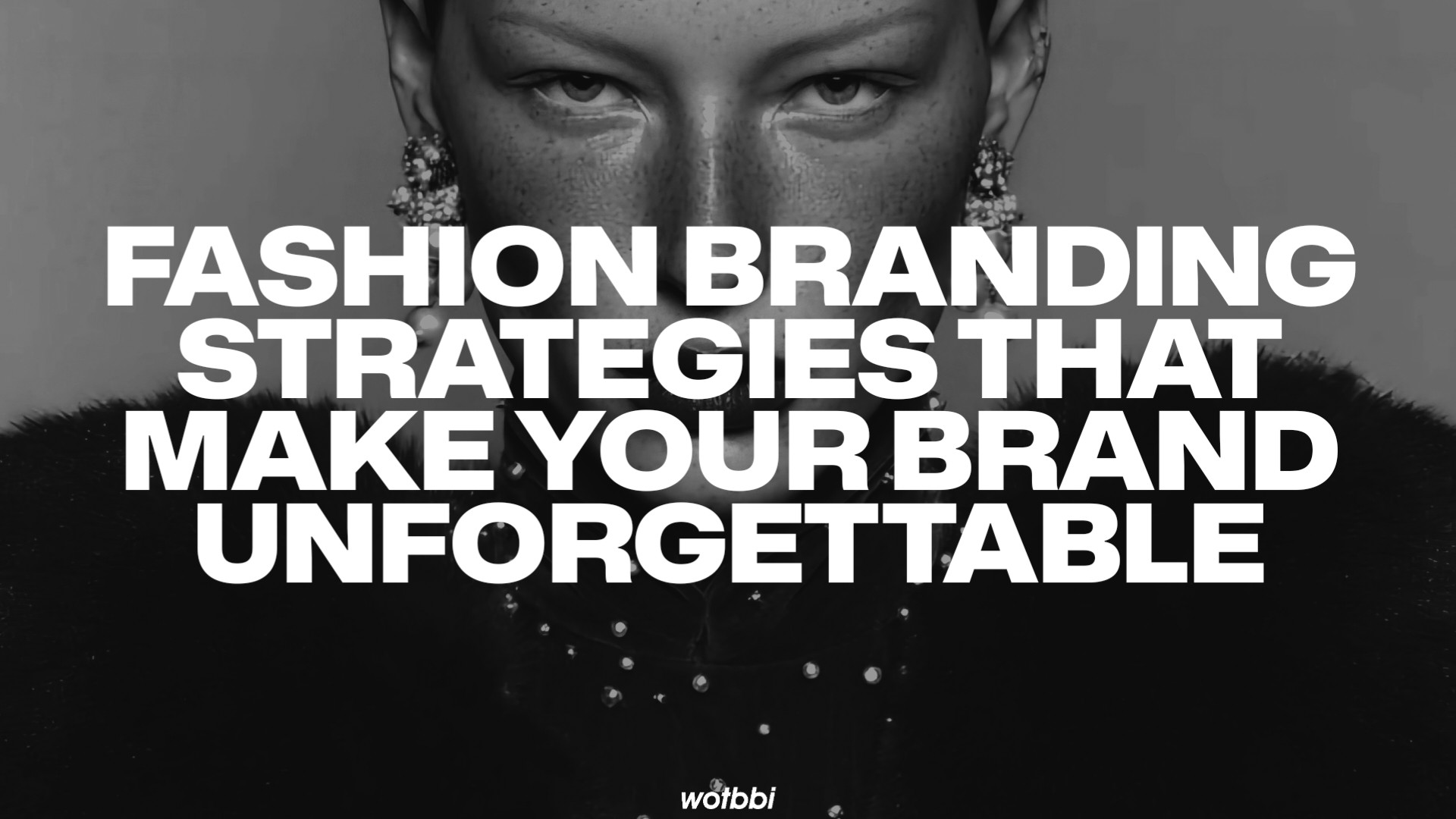6 Fashion Branding Strategies That Will Make Your Brand Unforgettable

Introduction
The fashion industry moves fast. Trends rise and fall overnight, competition grows fiercer every season, and consumers are constantly bombarded with new choices.
To break through the noise, a brand needs more than beautiful designs. It needs powerful branding that captures attention, builds loyalty, and sparks conversation.
At Wotbbi, we have worked with fashion brands across different stages of growth, and we know first-hand that traditional branding or marketing tactics are no longer enough.
What truly makes a brand unforgettable is bold strategy combined with creative execution.
The following six fashion branding strategies are not standard ideas you will find anywhere else. They are innovative approaches developed and refined exclusively by our team for our clients, designed to push boundaries and deliver measurable impact.
1. The Conversation Piece:
One Item That Starts the Buzz
Sometimes, one product is all it takes to get everyone talking. Introduce a single piece that is surprising, quirky, or completely out of left field. Something so unexpected that it feels like a statement.
Think of Balenciaga turning a garbage bag into a luxury handbag or reimagining duct tape as a bracelet. The goal is not to sell thousands of units. The goal is to spark curiosity, social shares, and press coverage. A piece like this positions your brand as daring and creative, even playful.
Tip: Keep it tied to your brand identity. If your label is eco-driven, make the “buzz piece” from upcycled scraps. Release it in limited numbers to add scarcity, then build anticipation through teaser campaigns on TikTok or Instagram.
2. The Challenge Campaign:
Let Customers Do the Marketing
Instead of relying only on ads, turn your customers into brand ambassadors. Launch a challenge that gets people styling or using your pieces in unexpected ways, then reward the best entries.
It could be as simple as asking followers to reinvent a jacket into three different outfits. Or something playful like wearing an item from your brand upside down in public. Encourage video posts, create a unique hashtag, and feature the most creative entries on your official channels.
This not only generates user-generated content but also builds a sense of community. A single viral challenge can put your brand in front of millions for a fraction of the cost of paid advertising.
3. Past Meets Present:
Use History to Add Depth
Fashion thrives on storytelling, and history is a goldmine of inspiration. Instead of only chasing trends, look into archives, museum collections, or forgotten craftsmanship techniques. Then fuse them with modern design.
Maybe you adapt intricate Byzantine knotting into knitwear. Or borrow from Renaissance jewelry to design accessories with hidden compartments. By bringing the past into the present, you position your brand as cultured, thoughtful, and authentic.
Why it works: Fast fashion can copy styles, but it cannot copy substance. When you explain the history behind a design through social media, lookbooks, or even AR experiences, you give customers a reason to connect emotionally and share your story.
4. Scarcity on Steroids:
One Item, One Owner
Exclusivity sells, but extreme exclusivity builds legends. Imagine releasing one piece per collection that is available to only a single buyer. It could be a gown made with rare fabrics, a custom jacket, or a piece of wearable art.
Not only does this justify premium pricing, but it also creates stories. That one-of-a-kind item will likely resurface at auctions or on resale sites, adding to your brand’s mystique and desirability.
Even if most customers never own it, the aura of exclusivity spills over into your entire line.
5. The Phantom Collaboration:
Play with Imagination
This one is bold and brilliant when executed carefully. Tease a collaboration with a fictional character, a historical figure, or even a completely made-up designer. Share mock-up sketches, mysterious press releases, or teaser videos.
Then, at launch, reveal the twist. The “collaboration” was never real, but the collection was inspired by the story you created.
Handled well, this sparks intrigue, makes your brand feel inventive, and generates unimaginable viral discussions. Just keep it lighthearted and transparent in the reveal so customers view it as clever storytelling and not deception.
6. Narrative-Driven Releases
Micro-Collections with a Story
Instead of dropping large seasonal collections, consider smaller, narrative-driven releases. Each micro-collection can be inspired by a city, cultural moment, or social cause. Every piece carries part of that story.
Think of a capsule collection inspired by Tokyo street culture, paired with short films or behind-the-scenes storytelling. Buyers do not just purchase clothes. They buy into the narrative, which makes them far more likely to stay loyal and spread the word.
Final Thoughts
Standing out in fashion today is not about having the loudest campaign. It is about being memorable, meaningful, and a little unexpected.
Whether it is through scarcity, storytelling, or immersive experiences, these fashion branding strategies can help transform your label from just another clothing brand into a fashion house people cannot stop talking about.
Try one or combine several of these strategies, and watch how your brand recognition, customer loyalty, and sales begin to climb.
And if you’re after a hands-on branding partner who gets fashion, you know where to find us.


Ahmed at 3:00 am, September 5, 2025 -
Amazing Tips!